When creating a living area for cattle, it can be tough to know their requirements. It is important to design a space for housing your cows while catering to their cleanliness and comfort. So how big should a cow stall be to keep your animals safe and comfortable?
Cow stall size depends on the size of the cow. It is important to factor in whether they can comfortably lay down, stand, and whether you can clean it easily. A common size suggestion for a freestall is 12’x12’, though you might want to go smaller if the stall is for milking.
This is not to say there is a one hundred percent accurate size for all of your cattle needs. Tie stalls differ from freestalls and may have more benefits for milking, though they come with their own set of issues. Stall size is ultimately up to your and your cows’ needs, but below is some information to help narrow down your choices.
How Big To Make Your Cow Stall
Both for the efficiency and comfort of the cattle, it is a good idea to look over your options before making any decisions. A comfortable cow is your best bet for their health and longevity. The size of your cattle matters most when it comes to stall size, but there are also some other factors to consider:
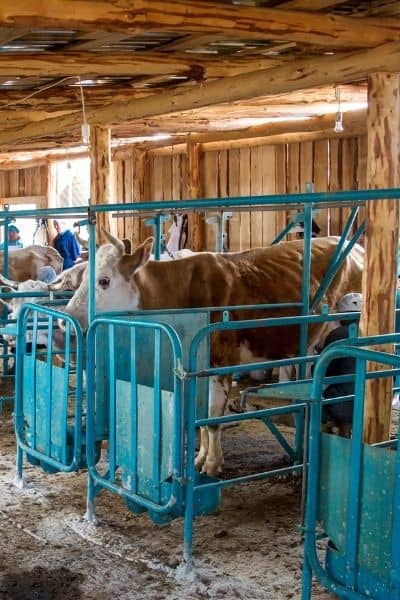
Key Factors to Consider When Building a Cowstall
It may be overwhelming to consider every option, but constructing stalls of proper size is rewarding. What’s best for your cattle will ultimately be what’s best for you. There is much more to consider than just stall size, however.
The Importance of Stall Room and Freestalls
There are many benefits to properly designed stalls and freedom of movement for one’s cattle. While there may be easier or cheaper alternatives to more open stalls, there are many benefits to putting the health of your cows first. Listed here are the upsides of freestalls:
Cattle Health
This is obvious given what has been discussed so far, but it is worth mentioning just how a cow is benefited from comfortable movement. Dairy stanchions are outdated and unhealthy for cows, as it irritates their shoulders and forces them to stand. Extra room and the freedom to move around keeps hoof diseases at bay and reduces the chance of lameness in cattle.
Natural living has been noted as a benefit for cows’ lactation. The reason for this is mental and physical. By having more freedom than is offered by tiestalls, cows produce the milk of higher quality and in greater quantities. This ultimately is great for the dairy industry.
Cleanliness
While some who care for cattle see a benefit to narrower stalls for cleaning, the room for movement and reach around your cow is much better for cleanliness. Healthier cows also bring fewer pests and poor odors. Easier access to your cattle’s droppings also mean quicker cleaning time.
A cow stall should provide a comfortable space for cattle. The benefits to this are plentiful, with most reporting greater health and an uptick in milk production in their cows. Simple yet effective designs for freestalls exist, and it's recommended that cattle owners adopt this method for housing their animals.
Types of Freestalls
As mentioned earlier, your stall’s purpose is an important factor in determining its size. Even among freestalls and tiestalls, there are numerous subcategories. Below is a rundown of some freestall types:
Open Freestalls
The benefits of open freestalls are that they save on cost while being efficient. An open freestall can be shorter than a closed stall, saving on materials while allowing the cow more freedom in the front. This is typically seen as a benefit to their mental health.
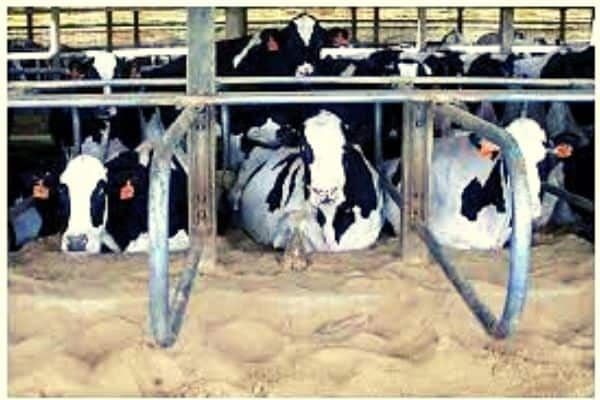
Open Front Freestall (Source: MilkProduction.com)
Closed Freestalls
The benefit of a closed freestall is that there is more security for the animal. This is especially true if their area faces land you do not want them to roam. A downside to this stall is that they must allow the cow a full range of motion, so building it will take more material.
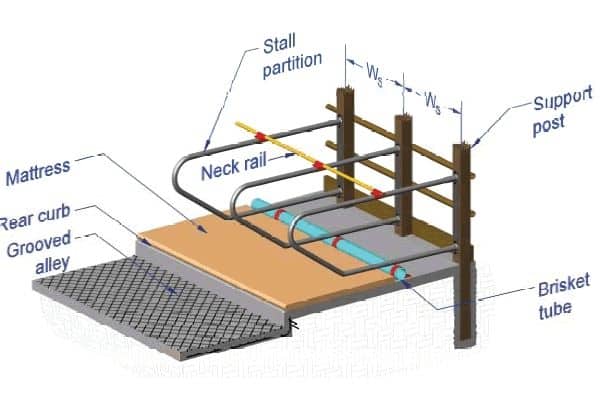
Closed Freestall (Source: Penn State )
Extra Bedding Freestalls
These freestalls cater most to the comfort of your cows and are most relevant for those that emphasize their cows’ health. For these stalls, common bedding is used; however, it is far deeper. Up to 9 inches of the material, be it sawdust, hay, or straw, is laid beneath the cow.
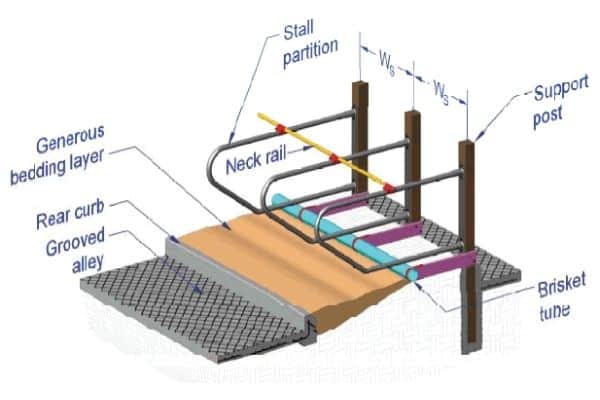
Freestall with extra bedding (Source: Penn State )
Facing Freestalls
Facing freestalls make the best use of space while still emphasizing the safety of your cattle. These are essentially double open freestalls, with the cows sharing their lunging room. This type of stall is sometimes frowned upon for keeping cows on edge and may see better use with heifers or only for limited periods.
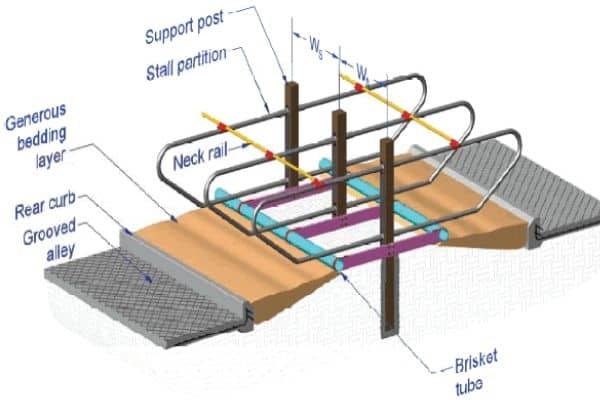
Facing freestalls or Head to Head Freestalls (Source: Penn State )
It may seem like common sense to some about handling stall construction, but cow behavior is not easy to narrow down. Your cow's health may matter the most for your needs, so it is a benefit to consider all options.
Stall systems offer much more comfort than in the past, and they should continue this way for the longevity of these animals.
The Negatives of Tiestalls
Tiestalls still see common use worldwide, especially in the United States, but mounting evidence suggests these stalls are bad environments.
Limited-use tie stalls tend to be fine as long as the cow is only there for a limited time, such as with treatment or milking. Yet, there are still plenty of cattle keepers who house their animals in tie stalls.

The main issue with keeping cattle housed in tiestalls indefinitely is that they are uncomfortable. A stanchion irritates the cows’ shoulders and is now widely considered unusable these days. The best option for extra comfort would be deep, loose bedding material.
Cows need their exercise as much as humans at the end of the day. Numerous studies have reported more identifiable diseases in tied cows than they did those who were free to roam. When considering your options as a cattle owner, remember that free stalls can ultimately save your cows by discouraging disease and lameness.
Conclusion
Cows left in cramped, poor conditions do more harm than good for their owners. Adopting freestalls or at least allowing one’s cows to move regularly is a great way to keep their health in order. The cattle industry can highly benefit from larger spaces for individual cow stalls, and phasing out harmful practices is key to this.
Sources:
https://extension.psu.edu/designing-and-building-dairy-cattle-freestalls
https://thedairylandinitiative.vetmed.wisc.edu/home/housing-module/adult-cow-housing/
https://arcj.org/en/issues-en/animal-welfare-en/problems-of-dairy-cows-in-tie-stall-barns/
http://www.milkproduction.com/Library/Scientific-articles/Housing/Opportunities-for-improved-cow-comfort-through-freestall-barn-renovations/
https://hoards.com/article-15874-three-stalls-every-tie-stall-barn-needs.html
